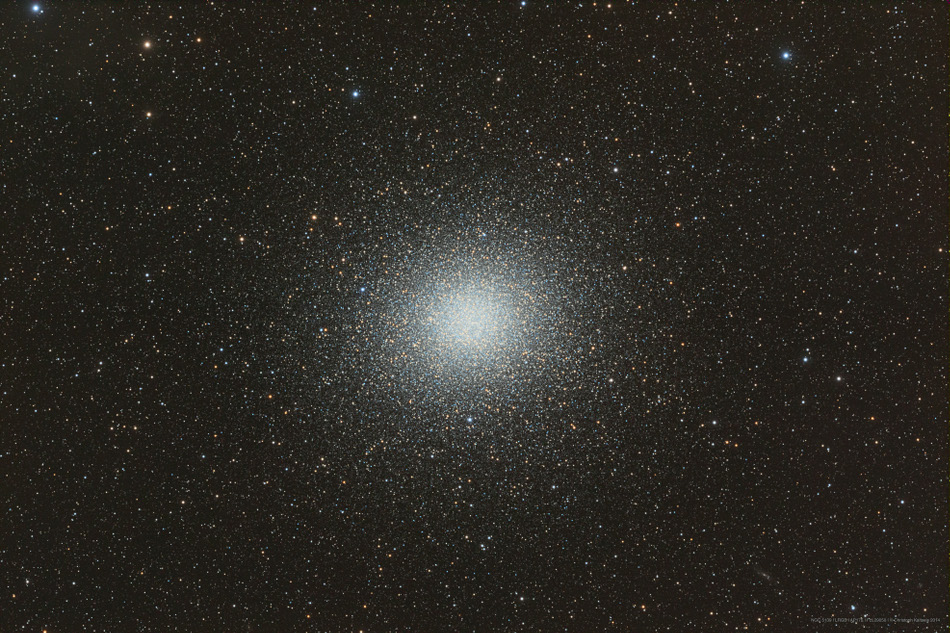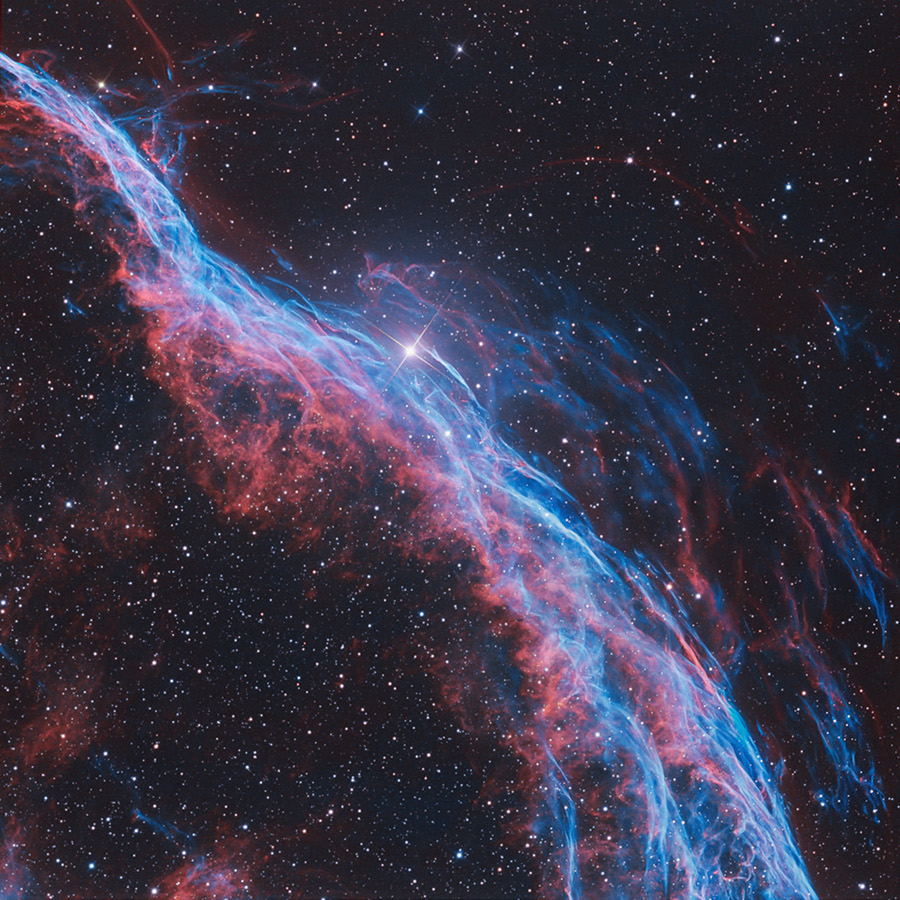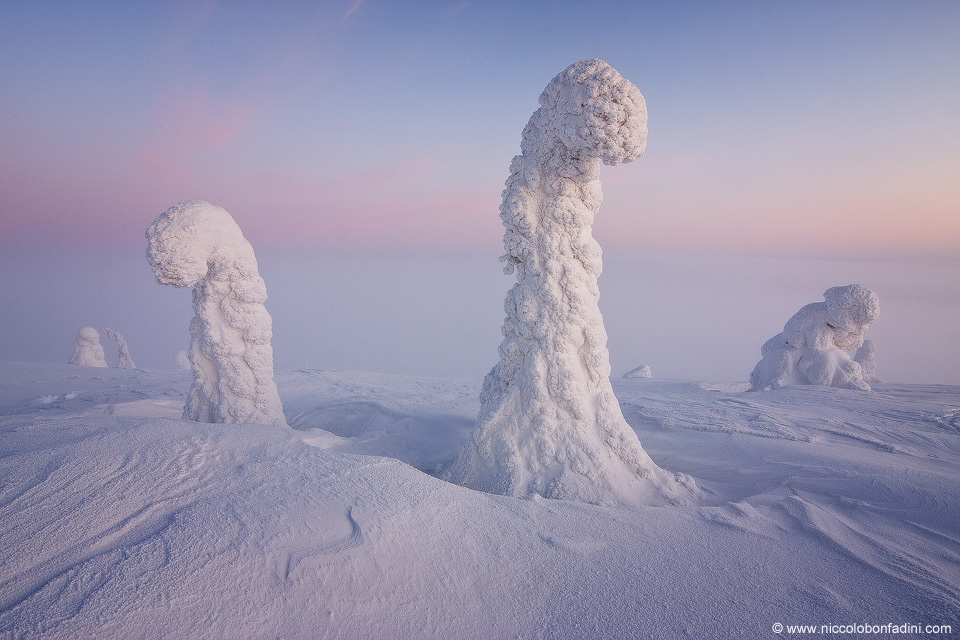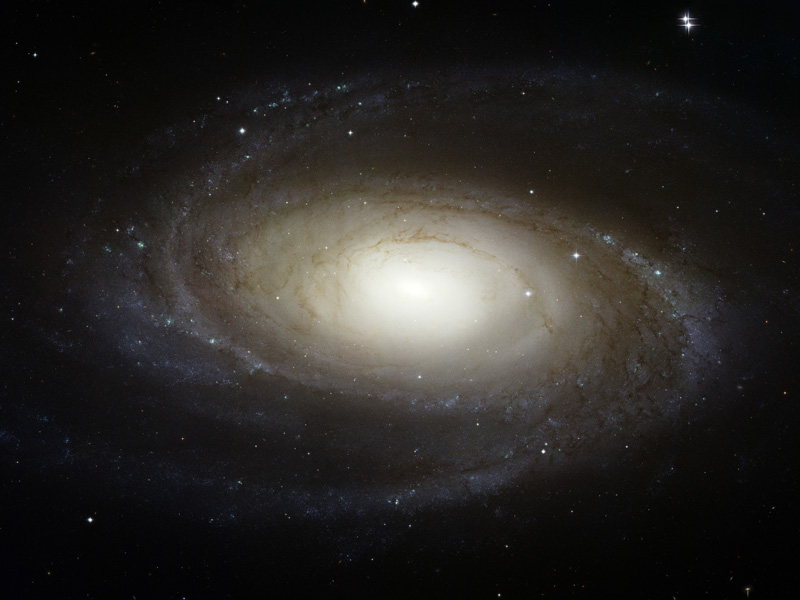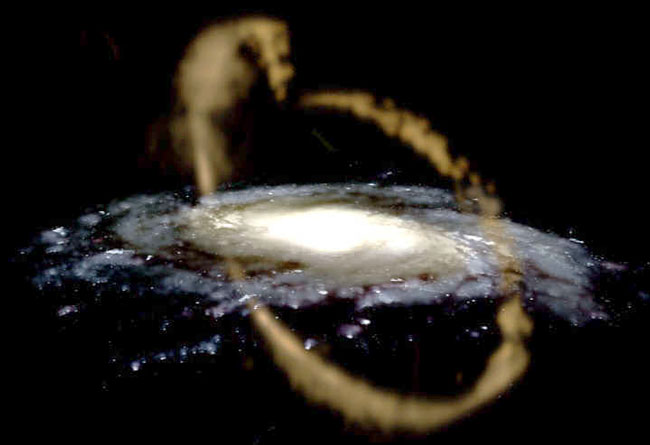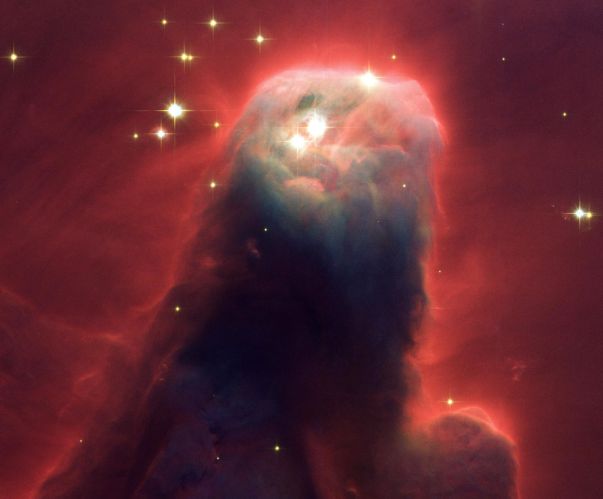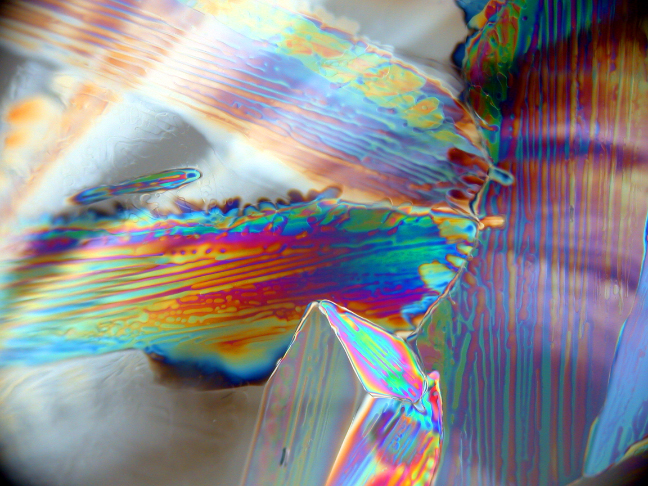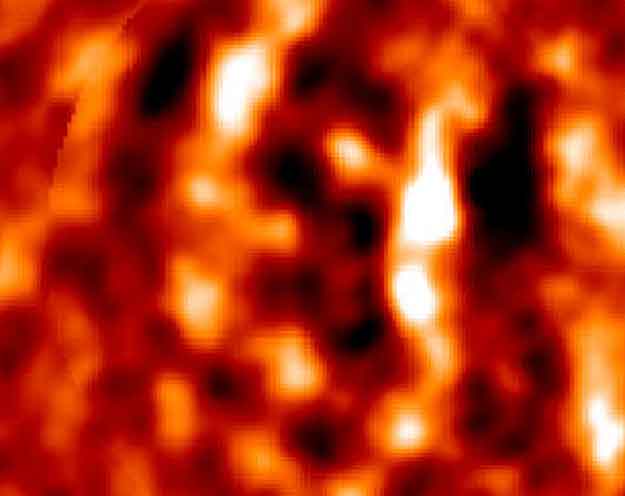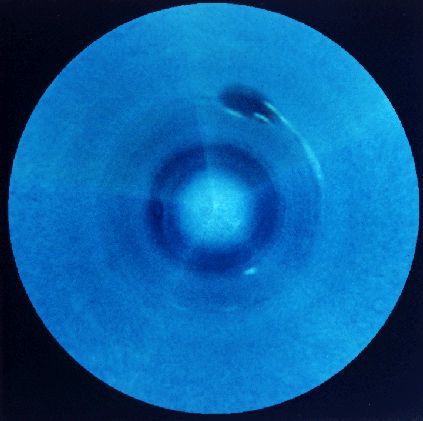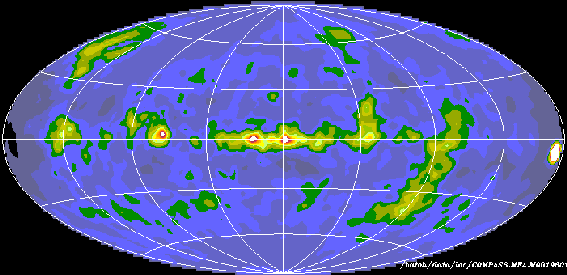| << Previous | Index | Next >> |
2015 Telescopic observers on Earth have been treated to spectacular views of Saturn lately as the ringed planet reached its 2015 opposition on May 23 at 0200 UT. Of course opposition means opposite the Sun in Earth's sky. So near opposition Saturn is up all night, at its closest and brightest for the year. These sharp images taken within hours of the Sun-Earth-Saturn alignment also show the strong brightening of Saturn's rings known as the opposition surge or the Seeliger Effect. Directly illuminated, the ring's icy particles cast no shadows and strongly backscatter sunlight toward planet Earth, creating the dramatic surge in brightness. Saturn currently stands in the sky not far from bright Antares, alpha star of the constellation Scorpius.
2014 Globular star cluster Omega Centauri, also known as NGC 5139, is some 15,000 light-years away. The cluster is packed with about 10 million stars much older than the Sun within a volume about 150 light-years in diameter, the largest and brightest of 200 or so known globular clusters that roam the halo of our Milky Way galaxy. Though most star clusters consist of stars with the same age and composition, the enigmatic Omega Cen exhibits the presence of different stellar populations with a spread of ages and chemical abundances. In fact, Omega Cen may be the remnant core of a small galaxy merging with the Milky Way. This astronomically sharp color image of the classic globular cluster was recorded in March under Chilean skies from Hacienda Los Andes.
2013 Ten thousand years ago, before the dawn of recorded human history, a new light would have suddenly have appeared in the night sky and faded after a few weeks. Today we know this light was from a supernova, or exploding star, and record the expanding debris cloud as the Veil Nebula, a supernova remnant. This sharp telescopic view is centered on a western segment of the Veil Nebula cataloged as NGC 6960 but less formally known as the Witch's Broom Nebula. Blasted out in the cataclysmic explosion, the interstellar shock wave plows through space sweeping up and exciting interstellar material. Imaged with narrow band filters, the glowing filaments are like long ripples in a sheet seen almost edge on, remarkably well separated into atomic hydrogen (red) and oxygen (blue-green) gas. The complete supernova remnant lies about 1400 light-years away towards the constellation Cygnus. This Witch's Broom actually spans about 35 light-years. The bright star in the frame is 52 Cygni, visible with the unaided eye from a dark location but unrelated to the ancient supernova remnant.
2012 Who guards the north? Judging from the above photograph, possibly giant trees covered in snow and ice. The picture was taken last winter in Finnish Lapland where weather can include sub-freezing temperatures and driving snow. Surreal landscapes sometimes result, where common trees become cloaked in white and so appear, to some, as watchful aliens. Far in the distance, behind this uncommon Earthly vista, is a more common sight -- a Belt of Venus that divided a darkened from sunlit sky as the Sun rose behind the photographer. Of course, in the spring, the trees have thawed and Lapland looks much different.
2011 Sometimes the sky itself is the best show in town. In January 2007, people from Perth, Australia gathered on a local beach to watch a sky light up with delights near and far. Nearby, fireworks exploded as part of Australia Day celebrations. On the far right, lightning from a thunderstorm flashed in the distance. Near the image center, though, seen through clouds, was the most unusual sight of all: Comet McNaught. The photogenic comet was so bright that it even remained visible though the din of Earthly flashes. Comet McNaught has now returned to the outer Solar System and is now only visible with a large telescope. The above image is actually a three photograph panorama digitally processed to reduce red reflections from the exploding firework.
2010 Violent galaxy mergers can feed supermassive black holes. Theoretically, the result is intense emission from regions near the supermassive black holes, creating the some of the most luminous objects in the universe. Astronomers dub these Active Galactic Nuclei, or just AGN. But for decades only about 1 percent of AGN seemed to be associated with galaxy mergers. New results from a premier sky survey by NASA's Swift satellite at hard (energetic) X-ray energies now solidly show a strong association of AGN with merging galaxies, though. The hard X-rays more readily penetrate dust and gas clouds in merging galaxies and reveal the presence of emission from the active black holes. In fact, these panels show the location (circled) of Swift X-ray detected supermassive black holes in a variety of merging galaxy systems. The optical images are from the Kitt Peak National Observatory in Arizona. At top center is NGC 7319 and the compact galaxy group known as Stephan's Quintet.
2009 Close to the Great Bear (Ursa Major) and surrounded by the stars of the Hunting Dogs (Canes Venatici), this celestial wonder was discovered in 1781 by the metric French astronomer Pierre Mechain. Later, it was added to the catalog of his friend and colleague Charles Messier as M106. Modern deep telescopic views reveal it to be an island universe -- a spiral galaxy around 30 thousand light-years across located only about 21 million light-years beyond the stars of the Milky Way. Along with a bright central core, this colorful composite image highlights youthful blue star clusters and reddish stellar nurseries tracing the galaxy's spiral arms. It also shows remarkable reddish jets of glowing hydrogen gas. In addition to small companion galaxy NGC 4248 near the picture's right edge, background galaxies can be found scattered throughout the frame. M106 (aka NGC 4258) is a nearby example of the Seyfert class of active galaxies, seen across the spectrum from radio to x-rays. Active galaxies are believed to be powered by matter falling into a massive central black hole.
2008 What is that white arch over the water? What is being seen is a fogbow, a reflection of sunlight by water drops similar to a rainbow but without the colors. The fog itself is not confined to an arch -- the fog is mostly transparent but relatively uniform. The fogbow shape is created by those drops with the best angle to divert sunlight to the observer. The fogbow's relative lack of colors are caused by the relatively smaller water drops. The drops active above are so small that the quantum mechanical wavelength of light becomes important and smears out colors that would be created by larger rainbow water drops acting like small prisms reflecting sunlight. The above striking image of a fogbow was taken last week with the Sun behind the photographer. The rocks in the foreground are part of Ocean Beach in California, USA.
2007 The Hubble Space Telescope has resolved individual stars in a spectacular new image of nearby spiral galaxy M81. The feat is similar to Edwin Hubble's historic images with the Mt. Wilson 100-inch Hooker Telescope in the 1920s that resolved stars in neighboring galaxy M31. Edwin Hubble was able to use individual Cepheid variable stars to show that M31 was not nearby swirling gas but rather an entire galaxy like our Milky Way Galaxy. This above image in visible light taken by the Hubble Space Telescope is being used in conjunction with images being taken in ultraviolet by Galex, infrared by Spitzer, and X-rays with Chandra to study how stars have formed and died over the history M81. Light takes about 12 million years to reach us from M81. M81 is visible with binoculars toward the constellation of the Great Bear (Ursa Major).
2006 Do you ever feel like watching the NASA channel? If so, in addition to standard cable access and the standard NASA TV web pages, it might now be possible to watch NASA TV simply by accessing today's APOD. Watch cool rocket launches, real-time return of scientific results and images from deep space probes, press conferences, and interviews with scientists, educators, and astronauts. To see the channel optimally, one should have a broadband web connection and Windows Media Player properly installed. Options for watching NASA TV on other platforms are also available. On most computers, a sound adjustment slider is available on the lower right. Double clicking on the image will expand the image to fill your computer screen. A standard schedule is available for NASA's Public TV channel, as well as a live events listing and an educational programming guide. Watch NASA TV.
2005 Is our Milky Way Galaxy out to lunch? Recent wide field images and analyses now indicate that our home galaxy is actually still in the process of devouring one of its closer satellite neighbors. This unfortunate neighbor, the Sagittarius Dwarf galaxy, is now seen to be part of a larger Sagittarius Tidal Stream, a loose filament of stars, gas, and possibly dark matter that entangles the Milky Way. An artist's depiction of the stream is shown above. Speculation also holds that the Sagittarius Dwarf was once pulled through the Milky Way disk very close to our Sun's current location. An important resulting realization is that galaxies contain a jumble of clumps and filaments of both dim and dark matter.
2004 Cones, pillars, and majestic flowing shapes abound in stellar nurseries where natal clouds of gas and dust are buffeted by energetic winds from newborn stars. A well-known example, the Cone Nebula within the bright galactic star-forming region NGC 2264, was captured in this close-up view from the Hubble Space Telescope's Advanced Camera for Surveys. While the Cone Nebula, about 2,500 light-years away in Monoceros, is around 7 light-years long, the region pictured here surrounding the cone's blunted head is a mere 2.5 light-years across. In our neck of the galaxy that distance is just over half way from the Sun to its nearest stellar neighbor, Alpha Centauri. The massive star NGC 2264 IRS, seen by Hubble's infrared camera in 1997, is the likely source of the wind sculpting the Cone Nebula and lies off the top of the image. The Cone Nebula's reddish veil is produced by glowing hydrogen gas.
2003 Scientific images of cosmic dust clouds or even frozen water can be esthetic too. In fact, this picture of thin layers of forming ice crystals uses a scientific understanding of light's wave properties solely for artistic purposes. Titled "Illume", the picture was created by astrophysicist Peter Wasilewski. To make the picture, the crystals were illuminated by light shining through a polarizing filter -- a filter that restricts the otherwise randomly oriented light waves to vibrate in only one direction. While passing through the ice, different colors of the polarized light are then refracted and reflected along slightly different paths by the delicate crystalline layers. Viewing the scene with a second polarizing filter brings out the wondrous display of structure and color. Painting with "light, the laws of physics, and an attitude" Wasilewski has created a series of these evocative ice images that he refers to as Frozen Vision or Frizion.
2002 What may appear fuzzy to some makes things crystal clear to others. The cosmic microwave background radiation emanating from the universe could only have the above fuzzy pattern if it contained clear amounts of dark matter and dark energy. The conclusion, based on a detailed analysis of the temperature and spacing of the bumps, was a surprise to those who felt that previous evidence for such a strange universe, based on observations of distant supernovae, was somehow inaccurate. The measurements were made with a novel group of microwave telescopes in Tenerife, Spain called the Very Small Array. The bumps appearing above are some of the oldest objects ever seen.
2001 High above planet Earth, a human helps an ailing machine. The machine, in this potentially touching story, is the Hubble Space Telescope, which is not in the picture. The human is Astronaut Steven L. Smith, and he is seen above retrieving a power tool from the handrail of the Remote Manipulator System before resuming work on HST in 1999 December. For most astronauts, space is not a place for relaxation and vacation, but rather a place for hard work. Since many space missions involve costly equipment and complicated experiments, astronauts are usually people of considerable knowledge and training. Although the hours may be long and work may be taxing, one frequently reported perk of working in space is the spectacular view.
2000 Scroll right to virtually climb the largest volcano in the Solar System. Olympus Mons on Mars measures three times higher than Earth's highest mountain, and has a volume over fifty times greater than Earth's largest volcano. The caldera at the top is over 70 kilometers wide. The low gravity and relatively static surface crust on Mars allows structures as large as Olympus Mons to form. Surrounding the volcano is a cliff that ranges up to 10 kilometers high. This black & white image is one of over 20,000 just-released images taken by the robot spacecraft Mars Global Surveyor that continues to orbit Mars.
1999 The Plane of the Ecliptic is illustrated in this Clementine star tracker camera image which reveals (from right to left) the Moon lit by Earthshine, the Sun's corona rising over the Moon's dark limb, and the planets Saturn, Mars, and Mercury. The ecliptic plane is defined as the imaginary plane containing the Earth's orbit around the Sun. In the course of a year, the Sun's apparent path through the sky lies in this plane. The Solar System's planetary bodies all tend to lie near this plane, since they were formed from the Sun's spinning, flattened, proto-planetary disk. The snapshot above nicely captures a momentary line-up looking out along this fundamental plane of our Solar System.
1998 This infrared Hubble Space Telescope view may contain the first ever direct image of a planet outside our own solar system. The picture shows a very young double star located about 450 light-years away toward the constellation of Taurus. Cataloged as TMR-1 (Taurus Molecular Ring star 1), the binary system is still embedded in the dust cloud that formed it. This double star and dust cloud are the brightest grouping in the picture, glowing strongly at infrared wavelengths. A filament extends from the binary system toward the lower left and points toward the spot of light representing the candidate planet. Astronomers believe this planet is a "runaway" object which was gravitationally ejected, the filament tracing the path to its present location at about 1500 times the Earth-Sun distance from the parent star system. Models suggest that the planet and binary system are a mere 300,000 years old, with the planet having a mass of about 2 to 3 Jupiters. Future observations to look for the planet's continued runaway motion and spectral signatures should be able to confirm the nature of this object. While this and other tantalizing discoveries of extrasolar planetary objects and protoplanetary disks don't seem to offer direct examples of solar systems like our own, they do strongly hint that planet formation is a varied and common process.
1997 Neptune, the Solar System's outermost gas giant planet, is 30 times farther from the Sun than Earth. Twelve years after a 1977 launch, Voyager 2 flew by Neptune and found surprising activity on a planet that receives only 3 percent as much sunlight as Jupiter. In its brief but tantalizing close-up glimpse of this dim and distant world, the robot spacecraft recorded pulses of radio emission, zonal cloud bands, and large scale storm systems with up to 1500 mile per hour winds - the strongest measured on any planet. This mosaic of 5 Voyager images shows Neptune's Southern Hemisphere. Cloud bands and the Earth-sized, late "Great Dark Spot" with trailing white clouds located at about 22 degrees southern latitude are clearly visible. The distance from the Great Dark Spot feature to Neptune's South Pole (image center) is about 17,000 miles.
1996 This premier gamma-ray view of the sky was produced by the COMPTEL instrument onboard NASA's orbiting Compton Gamma Ray Observatory. The entire sky is seen projected on a coordinate system centered on our Milky Way Galaxy with the plane of the Galaxy running across the middle of the picture. Gamma-ray intensity is represented by a false color map - low (blue) to high (white). COMPTEL's sensitivity to gamma-rays which have over 1 million times the energy of visible light photons reveals the locations of some of the Galaxy's most exotic objects. The brightest source, the Crab pulsar, is located near the plane of the Galaxy on the far right. Moving along the plane from the Crab, more than halfway toward the galactic center, another bright gamma-ray source, the Vela pulsar, appears. The galactic center itself, along with the famous black hole candidate Cygnus X-1 (near the plane, halfway from the center to the left edge) are also seen as bright sources. Both above and below the plane, spots of gamma-ray emission due to distant active galaxies are also visible.
| << Previous | Index | Next >> |

